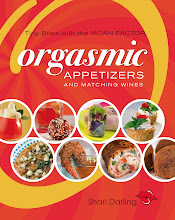
I tried beef Wellington for the first time at age 16 at Inn on the Park in North York, Ontario. My first boyfriend and his family invited me to join them for dinner. This was the first sophisticated restaurant I had ever attended and it certainly left a great impression on me. My boyfriend assured me by whispering in my ear, "You can order whatever you like." I decided to order the same dish as my boyfriend's father, as I was enamored by his enthusiasm for a menu item called beef Wellington. Well, that evening I fell in love with the boy, his family, beef Wellington and fine dining.
It is believed that the Duke of Wellington, who won the Battle of Waterloo in 1815, was a finicky eater, yet happen to like one particular dish -- beef wrapped in puff pastry. So, this dish was named after him. Another story says this dish supposedly resembled his highly polished Wellington boot, and therefore acquired the name this way.
Whatever the true story might be, beef Wellington has remained a decadent and popular dish since this time.
This is a dish I've struggled with and have yet to master. The reason is my possessing an unwillingness to remember to use a meat thermometer.
Classic beef Wellington uses filet of beef tenderloin covered with pate (often liver or foie gras) and duxelles (mixture of mushrooms, onions, shallots and herbs), wrapped in puff pastry.
One version uses a Madeira sauce. Due to the richness and sweetness, this sauce requires, as a wine partner, a full-bodied red wine with forward fruit flavours and soft bitterness. Too much tannin (bitterness and astringency) will clash with the sweetness in the sauce. Try Merlot or Shiraz from a warm climate like Australia.
You might also choose to pair this dish with a dense, off-dry rose or even a small glass of tawny Port.
Forgo the Madeira sauce and partner classic beef Wellington (with or without a red wine sauce) alongside an austere red wine of choice, such as Cabernet Sauvignon, Cabernet Franc, Tempranillio, Amarone, etc.
There are many Wellingtons one can make using vegetables, fish, seafood, chicken, duck, pork, veal, venison, buffalo and even elk. I've recently discovered elk and absolutely adore it.
When making a classic rendition I use puff pastry. When making mock Wellington I like to use Pillsbury’s croissant dough, available in the refrigerator section at supermarkets. The croissant dough is easy to work, reliable and delicious and makes for outstanding individual, mock Wellingtons of every flavour. Just be sure to par cook heavier flesh like pork, chicken, venison or elk before wrapping it in the pastry.
I enjoy creating mock versions, such as salmon, chicken with pesto Wellington, steak with blue cheese and others.
Salmon Wellington seasoned with fresh herbs, such as dill or chives, tastes wonderful with pinot noir or red Burgundy. Salmon has enough fattiness to stand up to a light, fruit red.
Chicken with pesto Wellington is fatty, thus requiring a white wine with lots of fattiness, such as a barrel fermented and aged white like fume blanc or chardonnay. Fume blanc is sauvignon blanc that has been fermented and aged in oak barrels. Or look for a white from a warm climate with higher alcohol (14%). Alcohol adds viscosity to wine -- thickness in weight and texture. This occurs on the palate as fatty or creaminess.
Steak with blue cheese Wellington certainly requires a red wine with austere tannins, such as cabernet sauvignon.
You could also create pork Wellington with honey mustard, as well. The sweetness in the honey mustard needs a white wine with a hint of sweetness to match. Try off dry riesling or off dry gewürztraminer.
In fact, any sauce that you like with a particular flesh will work within the croissant pastry, as well. The choices are endless. Thai versions could include a coconut curry based sauce that can be matched to an off dry white wine, like riesling. Chicken Wellington with an Asian slant could include soy sauce with garlic and ginger or even a spicy plum sauce. Match the spicy plum sauce version to an off dry rose.





No comments:
Post a Comment